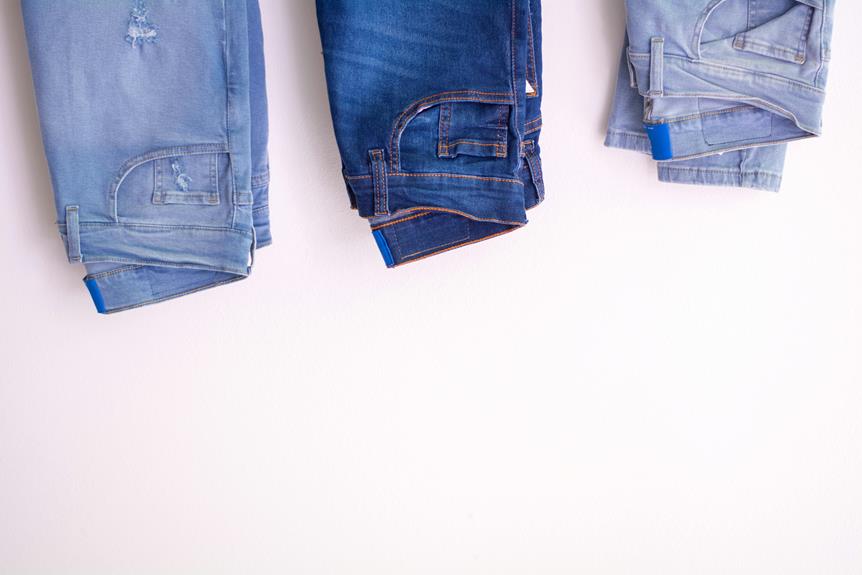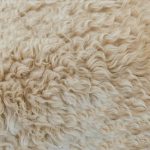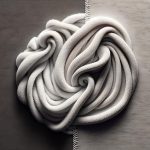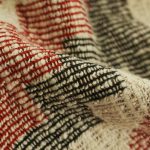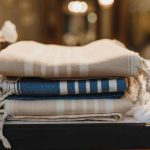You're likely familiar with the comfort and versatility of French terry fabric, but have you ever stopped to think about its performance in moisture-wicking? As someone who values both style and functionality in their clothing, you'll want to know how French terry stacks up against other fabrics. With its unique looped pile construction, French terry seems like a promising candidate for keeping you dry and cool. But just how well does it really perform? Let's take a closer look at the science behind French terry's moisture-wicking properties and explore what sets it apart from other fabrics.
Table of Contents
What Is French Terry Fabric
French terry is a type of fabric that's known for its unique texture and construction. It's made using a specific weaving technique that creates a soft, plush pile on one side and a smooth surface on the other.
This distinctive texture gives French terry its signature look and feel.
When you touch French terry fabric, you'll notice that it's incredibly soft and absorbent. This is because the fabric is made from loops of yarn that create a dense, velvety surface.
The loops also give French terry its stretchiness, making it a great choice for activewear and loungewear.
Unlike other types of fabric, French terry is often made from cotton or a cotton-blend yarn, which adds to its breathability and comfort.
Moisture-Wicking Properties Explained
As you've learned about the unique texture and construction of French terry fabric, it's likely you're wondering how it performs in terms of moisture-wicking properties, a key consideration for activewear and loungewear. You want to know if French terry can keep you dry and comfortable during your workout or on a lazy Sunday.
The answer lies in the fabric's structure. French terry's loops create a unique surface area that allows moisture to escape quickly. When you sweat, the loops absorb the moisture and release it to the outside, where it can evaporate rapidly. This process helps to keep you dry and cool, even during intense physical activity.
The moisture-wicking properties of French terry also make it a great choice for loungewear. You'll stay comfortable and dry, even when you're not moving around. Plus, the fabric's natural breathability means you won't feel hot or clammy, making it perfect for relaxing around the house. Overall, French terry's moisture-wicking properties make it a versatile fabric suitable for both performance and loungewear.
French Terry Vs Other Fabrics
When it comes to performance fabrics, French terry is often compared to other popular options like cotton, polyester, and bamboo – but how does it stack up in terms of moisture-wicking properties, breathability, and overall comfort?
You might be surprised to learn that French terry holds its own against these competitors. Unlike cotton, which can become heavy and soggy when wet, French terry's unique looped pile construction allows for excellent airflow and moisture transfer. This means you'll stay cooler and drier, even during intense activities.
In comparison to polyester, French terry offers a softer, more natural feel that's gentle against your skin.
Bamboo, on the other hand, is often praised for its breathability and moisture-wicking abilities, but French terry is a close second. Plus, French terry is often less expensive than bamboo, making it a more accessible option for those on a budget.
Factors Affecting Moisture-Wicking Performance
Now that we've established French terry's performance capabilities compared to other fabrics, let's examine the factors that affect its moisture-wicking performance, starting with the fabric's weave and density.
A tighter weave and higher density can hinder moisture-wicking performance, as they reduce the fabric's breathability and ability to transfer moisture. On the other hand, a looser weave and lower density can enhance moisture-wicking performance, but may compromise the fabric's durability.
Another factor affecting French terry's moisture-wicking performance is the type of fibers used. You'll get better moisture-wicking performance from French terry made with synthetic fibers like polyester or nylon, as they're designed to wick moisture away from the skin. Natural fibers like cotton, on the other hand, tend to absorb moisture rather than wick it away.
Additionally, the fabric's finish and treatments can also impact its moisture-wicking performance. Some finishes, like water-repellent coatings, can reduce the fabric's ability to wick moisture, while others, like moisture-wicking treatments, can enhance it.
Real-World Performance and Testing
In real-world scenarios, you'll want to test French terry's performance in various conditions to see how it holds up against its advertised moisture-wicking capabilities. You can do this by wearing French terry clothing during different activities, such as hiking, running, or yoga. This will give you a better understanding of how the fabric performs in different conditions.
To take your testing to the next level, consider the following:
* High-intensity activities: Wear French terry clothing during intense workouts to see how it handles heavy sweating. Pay attention to how quickly the fabric dries and whether it becomes uncomfortable or clingy.
* Cold and windy conditions: Test French terry's performance in cooler temperatures to see how it retains warmth and wicks away moisture. This will help you understand its breathability and insulation properties.
* Layering and pairing: Experiment with layering French terry clothing with other fabrics to see how it performs as a base layer or mid-layer. You can also try pairing it with different types of clothing, such as synthetic or natural fibers.
Frequently Asked Questions
Can French Terry Be Used for Outdoor Gear and Equipment?
You might wonder if French Terry can be used for outdoor gear and equipment, and the answer is yes. Its versatility, breathability, and absorbency make it a great option for clothing and gear that need durability and comfort.
How Does French Terry Perform in Cold Weather Conditions?
You'll find that French Terry performs well in cold weather conditions, retaining warmth while allowing for airflow. It's a great choice for outdoor gear, as it provides insulation without being too bulky or heavy.
Is French Terry Suitable for People With Sensitive Skin?
You'll be pleased to know that French Terry is generally gentle on skin, making it a great choice for people with sensitive skin. The soft, brushed cotton construction won't irritate or cause discomfort for most wearers.
Can French Terry Be Blended With Other Moisture-Wicking Fabrics?
You're wondering if French Terry can be blended with other moisture-wicking fabrics. Yes, it can! You'll often find it combined with polyester or nylon to enhance its moisture-wicking properties, making it suitable for activewear.
Does French Terry Require Special Care for Optimal Performance?
You'll want to wash French Terry in cold water and avoid using fabric softener or bleach to prevent damage. It's also best to air dry or tumble dry on low to maintain its texture and performance.
- How Does Ring Spun Cotton Affect Garment Fit and Shape Retention? - August 13, 2024
- What Are the Challenges in Producing Ring Spun Cotton? - August 13, 2024
- Is Ring Spun Cotton Suitable for Plus-Size Clothing? - August 13, 2024

